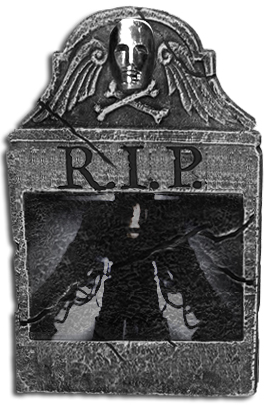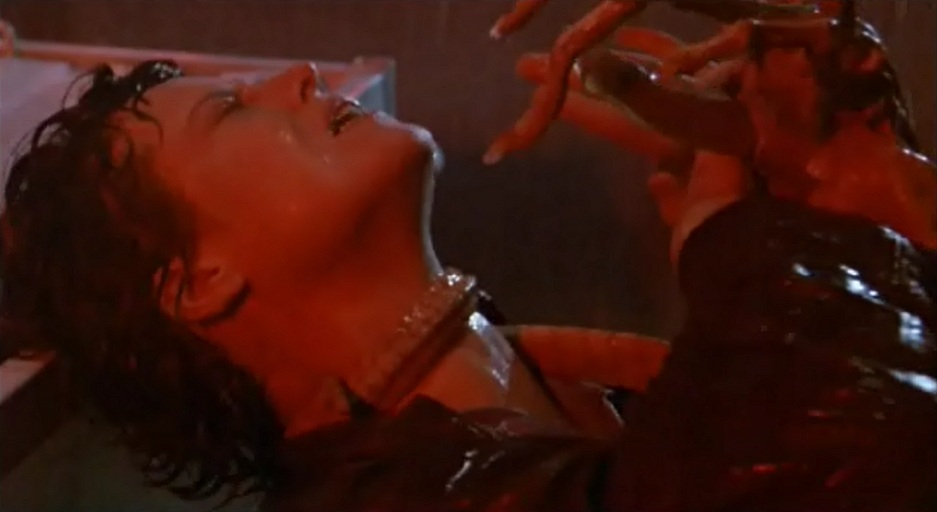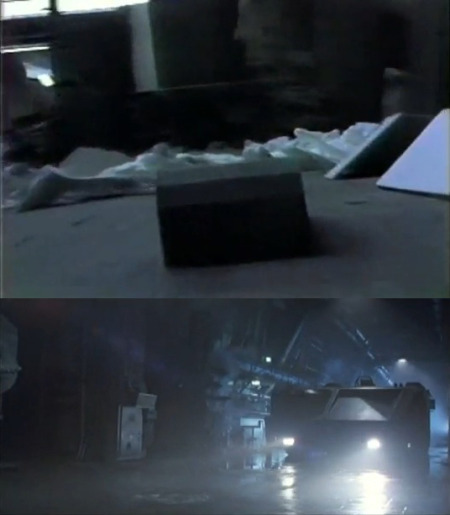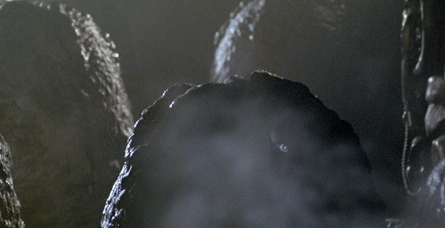Oscar Horrors: Bringing the Aliens to Life
 Thursday, October 25, 2012 at 2:14PM
Thursday, October 25, 2012 at 2:14PM  Here lies... the alien queen, expelled into space using strings, pulleys and dummies.
Here lies... the alien queen, expelled into space using strings, pulleys and dummies.
Amir here to look at the Oscar-winning Visual Effects of James Cameron’s Aliens (1986). Cameron’s films have an extraordinary record with the Academy when it comes to this category. His first two features were unrecognized – and let’s be honest, anyone who’s seen Piranha II: The Spawning will surely side with the voters – but he’s enjoyed five nominations and four wins from his next five attempts. The public has come to accept him as a revolutionary director too, a man whose every work will “change the language of cinema.” Cameron’s built his career on these visual spectacles and his upped the ante with every new film, but it all started back in 1986 when Aliens was released.
Long before he became a powerhouse Hollywood director, Cameron began learning his craft on the sets of the legendary Roger Corman. For the production of Aliens, Cameron brought in the Skotak brothers, visual effects supervisors and collaborators from his Corman era, to create a whole new world surrounding Ridley Scott’s Alien mythology; a world that was wilder, gorier and more expansive than Scott’s...

Where Scott had gone for atmospheric tension, Cameron chose thunderous action instead. Where there was eerie minimalism in Alien, there were explosions in Aliens. Where Scott wanted horror, Cameron, in his own words, wanted terror. As has become synonymous with his cinema, Cameron opted for intricate visual effects above anything else to rouse his audience. His final product is a triumph of craftsmanship and a prime example of nuts and bolts filmmaking at its best.
Aliens is a film that blurs the line between design and effects for its lack of post-production tinkering. What we see on the screen is, for the most part, what cinematographer Adrian Biddle captured on film. For generations, we have watched Aliens and feared for Ripley’s life along with her as the face-hugger crawls towards her in the locked laboratory. We’ve wanted to save Vasquez and Newt from the aliens chasing after them in those claustrophobic ducts. But what we don’t realize – or at least I didn’t, before getting around to the must-watch ‘making of’ videos (available here) - is how the effects team achieved that level of suspense using tools that despite their intricacy are almost primitive in their simplicity.
Who would think that the dreadful, smoke-filled, grey-tinted atmosphere of the colony is actually constructed using burnt out tarmac and other debris from torn down sets of Supergirl and other Pinewood films? Or that the spine-chilling crawling of the face-hugger is actually an incredibly simple pulley installed inside the body and operated with a single string? Examples of these elementary techniques are plenty, but even today, they hold their own against their CGI counterparts. One of my favourite revelations in the making-of series is the fact that the effects team had made cardboard mock-ups of all the elements external to Sulaco – the personnel career, the spaceship, etc. – and Cameron would film the movement of these very rough mock-ups on his personal camcorder during breaks. Surprisingly enough, the editors later used these very shots in the film to get the pacing right.
 Top: Cardboard mock-up of the carrier. Bottom: Eventual movement synchronized to the same movement speed.
Top: Cardboard mock-up of the carrier. Bottom: Eventual movement synchronized to the same movement speed.
The effects team aims to create a realistic ambience, so the terror they induce in the audience is a reflection of the visceral reaction of the cast. Cameron does that by putting them in the midst of a meticulously constructed world of miniature sets and Styrofoam walls and Nepthalene explosions, inhabited by puppets, animatronics, and dummy aliens; and he sews everything together with lighting tricks, reverse photography and all types of in-camera editing techniques. The methods may sound primitive to the CGI-accustomed audience of this day and age, but the impact of their work remains staggering on screen.
There is no doubt that Cameron’s most recent work is visually groundbreaking, nor is there any question regarding his status as one of the world’s greatest – if not the greatest - directors of action cinema, but every time I re-watch Aliens, there’s a part of me that wishes he’d leave Pandora and the green screen and sensors and CGI and all that behind for a while, get his hands dirty and make another knockout action film like this one. I can’t be the only one who wants that, can I?

Related
Oscar Horrors (all the episodes, 2012 and 2011)
Face Huggers Forever (Last year's 25th anniversary celebration of this masterpiece)



Reader Comments (1)
My favorite part of FX trivia is that Fox actually called Gale Anne Hurd to complain that they were getting all these financial statements about the FX budget and then they would look at the dailies and not see anything. They didn't realize all the primitive tools, sets, techniques, were being incorporated into the shots they were seeing, that's how seamless the FX were.
And you're not alone--Aliens still impresses me more than Avatar. I recently saw Aliens on the big screen (projected from the Blu-Ray) and couldn't believe how well everything held up. Avatar is grand, but I'll take Cameron's Aliens on any rainy day.